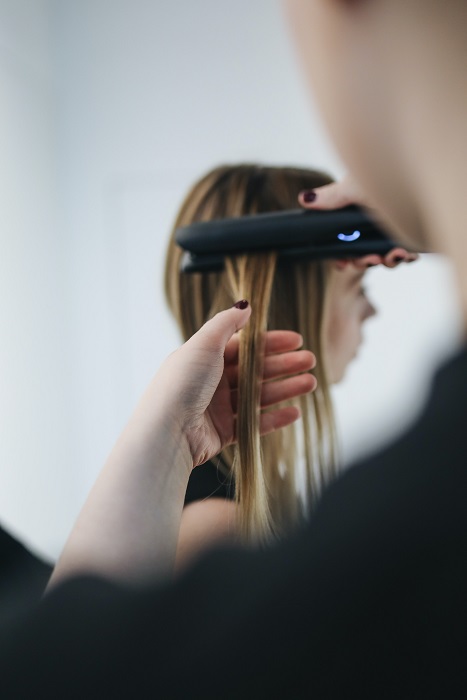Women are at risk of developing cancer from some hair products.
Hair treatment chemicals, often referred to as relaxers or straighteners, are widely used by those with curly hair. While these products are popular, they may come with some risk. Studies have been found that the use of these products may cause the development of certain cancers.
Everyday products often contain carcinogenic ingredients and endocrine-disrupting compounds. The endocrine system is responsible for hormonal regulation and other biological processes in the body from the point of conception until death. Many environmental contaminants are found to be endocrine disruptors and may cause adverse effects on human health. When endocrine-disrupting compounds are used in hair relaxers or straighteners there is an increased risk of cancer development compared with their use in other personal care products. This is due to increased absorption of chemicals into the bloodstream through the scalp. If the straighteners have caused any lesions or chemical burns, the rate of absorption may be intensified.

A study conducted by the National Institute of Environmental Health Sciences (NIEHS), part of the National Institute of Health (NIH), reported probable findings that link these chemicals to an increased risk of uterine cancer, specifically. Participants of this study were followed for nearly 11 years and consisted of 33,497 U.S. women ages 35-74. During this time, there were 378 cases of diagnosed uterine cancer within the group. It was found that those who used permanent straightening products frequently (more than four times in the previous year) were more than twice as likely to develop uterine cancer in comparison to those who did not use them.
Alexandra White, Ph.D., the lead author on this study, and the head of the NIEHS Environment and Cancer Epidemiology group said, “We estimated that 1.64% of women who never used hair straighteners would go on to develop uterine cancer by the age of 70; but for frequent users, that risk goes up to 4.05%. This doubling rate is concerning. However, it is important to put this information into context – uterine cancer is a relatively rare type of cancer.”
Uterine cancer is the most commonly diagnosed type of cancer of the female reproductive system. There were an estimated 65,950 new cases during 2022 alone, though uterine cancer only accounts for about 3% of all new cancer cases. It is unknown, however, which particular chemicals are to blame. Chemicals commonly found in hair straightening products such as formaldehyde, metals, parabens, and bisphenol A, are noted to be suspected contributors.
Various studies have shown that uterine and other hormone-sensitive cancer rates are rising in the United States overall, especially within the country’s population of Black women. In this particular study, published in the Journal of the National Cancer Institute, the risk of uterine cancer did not increase based on each individual’s race, but the greater risk to Black women may be explained by the increased rate of use of these products compared with other races. It was reported that approximately 60% of the participants who admitted to frequent use of these chemicals self-identified as Black females.
The findings reported in this study are consistent with two previous studies published in 2019 and 2021 by the same team that also show an increased risk of hormone-related cancers among women via the use of hair relaxers and permanent hair dye, including both breast and ovarian cancer.
Sources:
Hair straightening chemicals associated with higher uterine cancer risk
Use of hair products in relation to ovarian cancer risk
Permanent Hair Dye and Straighteners May Increase Breast Cancer Risk


Join the conversation!